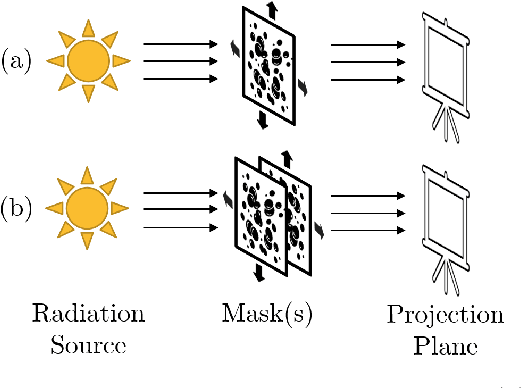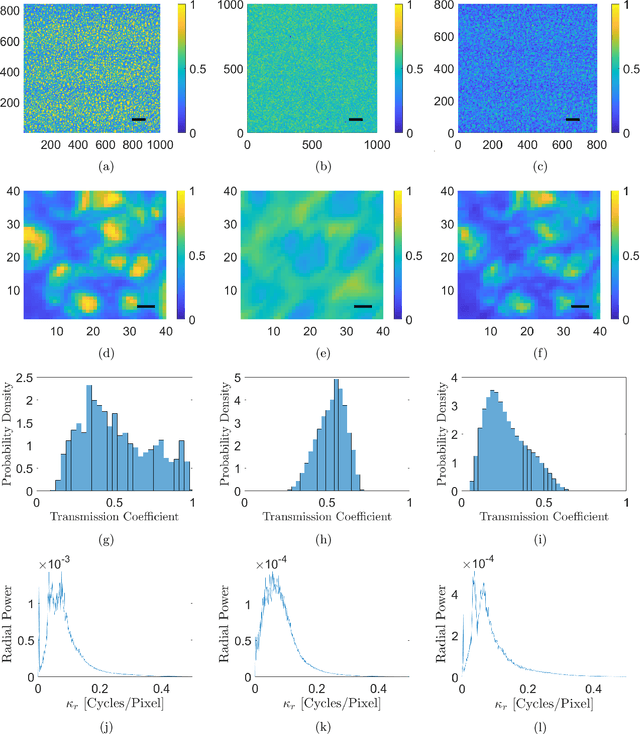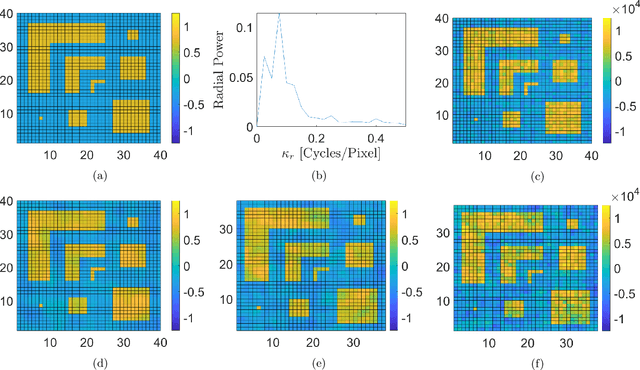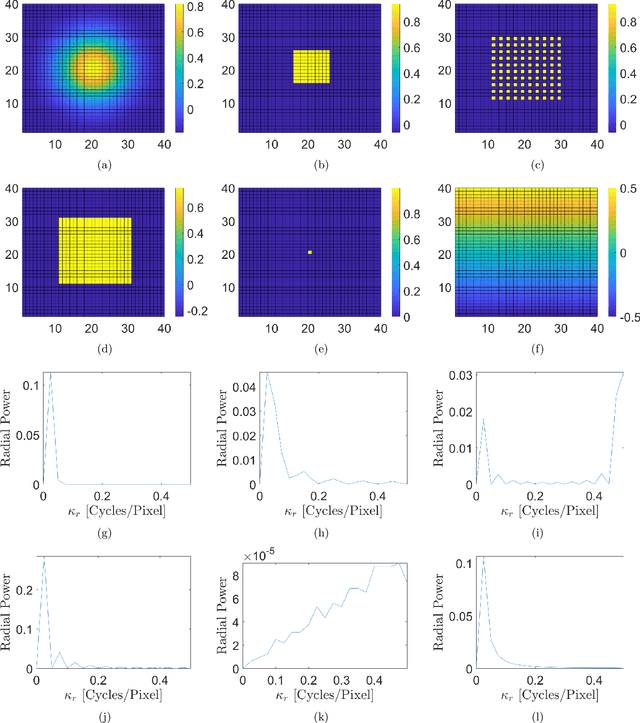Andrew M. Kingston
Universal mask for hard X rays
Mar 18, 2023Abstract:Multiple exposures, of a single illuminated non-configurable mask that is transversely displaced to a number of specified positions, can be used to create any desired distribution of radiant exposure. An experimental proof-of-concept is given for this idea, employing hard X rays. The method is termed "ghost projection", since it may be viewed as a reversed form of classical ghost imaging. The written pattern is arbitrary, up to a tunable constant offset, together with a limiting spatial resolution that is governed by the finest features present in the illuminated mask. The method, which is immune to both proximity-correction and aspect-ratio issues, can be used to make a universal lithographic mask in the hard-X-ray regime. Ghost projection may also be used as a dynamically-configurable beam-shaping element, namely the hard-X-ray equivalent of a spatial light modulator. The idea may be applied to other forms of radiation and matter waves, such as gamma rays, neutrons, electrons, muons, and atomic beams.
Optimizing illumination patterns for classical ghost imaging
Nov 07, 2022Abstract:Classical ghost imaging is a new paradigm in imaging where the image of an object is not measured directly with a pixelated detector. Rather, the object is subject to a set of illumination patterns and the total interaction of the object, e.g., reflected or transmitted photons or particles, is measured for each pattern with a single-pixel or bucket detector. An image of the object is then computed through the correlation of each pattern and the corresponding bucket value. Assuming no prior knowledge of the object, the set of patterns used to compute the ghost image dictates the image quality. In the visible-light regime, programmable spatial light modulators can generate the illumination patterns. In many other regimes -- such as x rays, electrons, and neutrons -- no such dynamically configurable modulators exist, and patterns are commonly produced by employing a transversely-translated mask. In this paper we explore some of the properties of masks or speckle that should be considered to maximize ghost-image quality, given a certain experimental classical ghost-imaging setup employing a transversely-displaced but otherwise non-configurable mask.
Ghost projection. II. Beam shaping using realistic spatially-random masks
Feb 18, 2022



Abstract:The spatial light modulator and optical data projector both rely on precisely configurable optical elements to shape a light beam. Here we explore an image-projection approach which does not require a configurable beam-shaping element. We term this approach {\em ghost projection} on account of its conceptual relation to computational ghost imaging. Instead of a configurable beam shaping element, the method transversely displaces a single illuminated mask, such as a spatially-random screen, to create specified distributions of radiant exposure. The method has potential applicability to image projection employing a variety of radiation and matter wave fields, such as hard x rays, neutrons, muons, atomic beams and molecular beams. Building on our previous theoretical and computational studies, we here seek to understand the effects, sensitivity, and tolerance of some key experimental limitations of the method. Focusing on the case of hard x rays, we employ experimentally acquired masks to numerically study the deleterious effects of photon shot noise, inaccuracies in random-mask exposure time, and inaccuracies in mask positioning, as well as adapting to spatially non-uniform illumination. Understanding the influence of these factors will assist in optimizing experimental design and work towards achieving ghost projection in practice.
 Add to Chrome
Add to Chrome Add to Firefox
Add to Firefox Add to Edge
Add to Edge